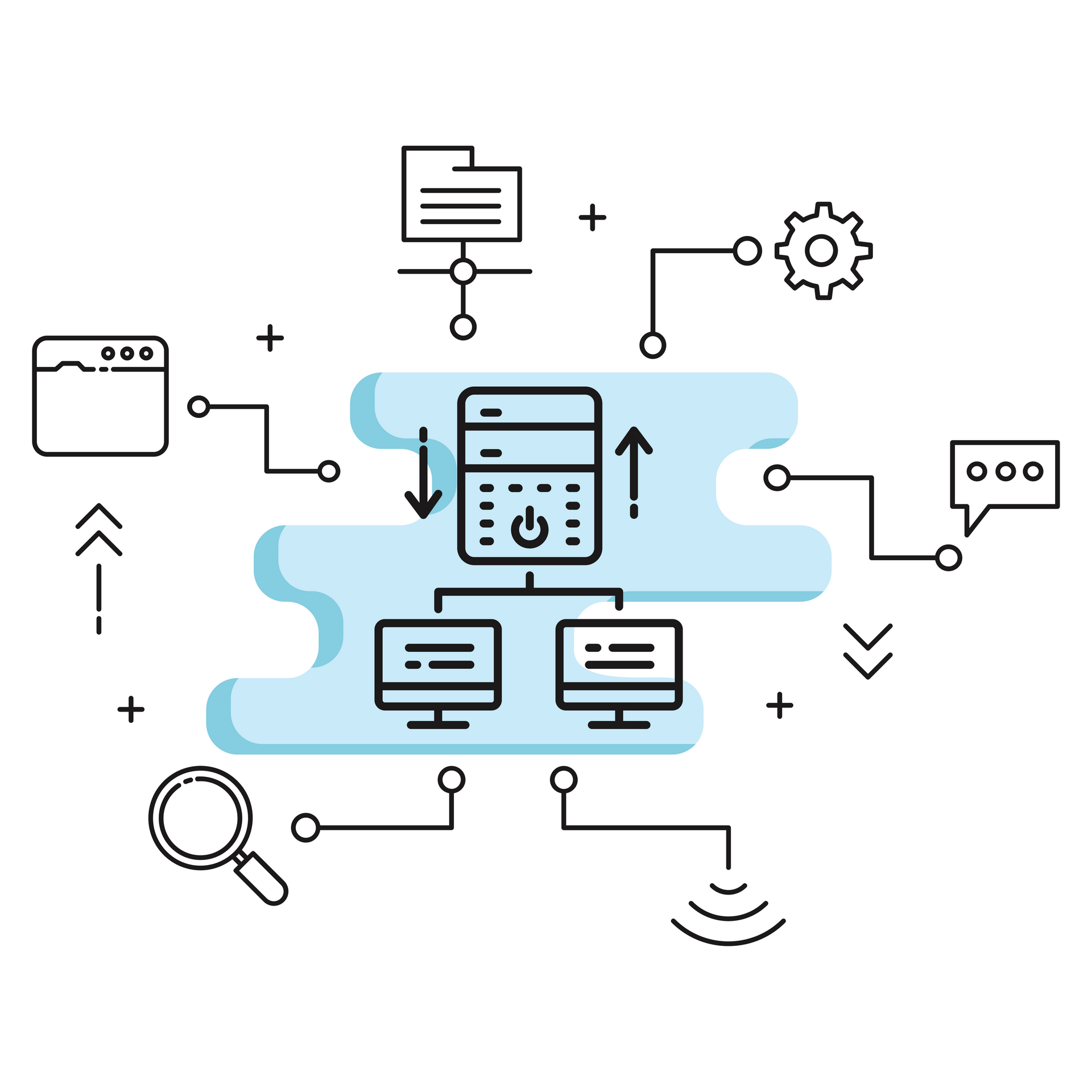The AWS Outage That Exposed Cloud Computing's Achilles Heel
When Amazon Web Services' US-EAST-1 region went down on 20th October, it didn't just affect services in Northern Virginia—it brought down websites and critical services across the globe, from European banks to UK government agencies. The incident has exposed a fundamental vulnerability in modern cloud infrastructure that no amount of redundancy planning can fully address.

The scale of disruption was extraordinary. Over 6.5 million outage reports globally. More than 1,000 companies affected. Amazon.com itself was down. Alexa smart speakers and Ring doorbells stopped working. Messaging apps like Signal and WhatsApp faltered. In the UK, Lloyds Bank customers couldn't access services, and even HMRC was impacted.
For an infrastructure supposedly built on resilience and redundancy, the cascade of failures raises uncomfortable questions about the true nature of cloud reliability.
The Root Cause: A Single Point of Failure
The problems began just after midnight US Pacific Time when AWS noticed increased error rates and latencies across multiple services. Within hours, Amazon's engineers had identified the culprit: DNS resolution issues for the DynamoDB API endpoint in US-EAST-1.
But this wasn't just a regional problem. The outage affected AWS global services and features that rely on endpoints operating from AWS's original region, including IAM (Identity and Access Management) updates and DynamoDB global tables.
Herein lies the critical vulnerability: US-EAST-1 isn't just another AWS region—it's the home of the common control plane for virtually all AWS locations (excluding only the federal government and European Sovereign Cloud).
This architectural reality means that issues in US-EAST-1 can cause global problems, regardless of where services are actually running. Previous incidents have demonstrated this vulnerability, with problems related to S3 policy management being felt worldwide despite being rooted in a single region.
Why Geography Doesn't Matter
Many organisations assume that running their services in European AWS regions protects them from US-based disruptions. This incident proved that assumption dangerously wrong.
Even if you're running workloads exclusively in European availability zones, your services likely depend on infrastructure and control-plane features located in US-EAST-1. Global account management, IAM, control APIs, and replication endpoints are all served from this region, regardless of where your actual workloads operate.
Although the impacted region was in Virginia, many global services used throughout Europe depend on infrastructure or control-plane features located in US-EAST-1. This means that even when European regions remain fully operational in terms of their own availability zones, dependencies can still cause cascading impacts across continents.
Certain "global" AWS services run exclusively from US-EAST-1, including DynamoDB Global Tables and the Amazon CloudFront content delivery network (CDN). When US-EAST-1 experiences problems, these global services fail—regardless of how carefully you've architected your multi-region deployment.
The Legacy of Being First
Part of the problem stems from US-EAST-1's status as AWS's original region. Many users and services default to using it simply because it was first, even when they're operating in completely different parts of the world. This creates hidden dependencies that only become visible when failures occur.
It's a classic case of technical debt accumulating over years of rapid growth. What made sense architecturally when AWS was primarily serving the US market has become a systemic vulnerability now that AWS powers critical infrastructure globally.
The Illusion of Redundancy
AWS promotes its architecture of regions and availability zones as inherently resilient. Each region contains a minimum of three isolated and physically separate availability zones, each with independent power and connected via redundant, ultra-low-latency networks.
Customers are actively encouraged to design applications and services to run across multiple availability zones to avoid being taken down by failures in any single zone. Many organisations have invested significantly in multi-AZ and even multi-region architectures, believing they've eliminated single points of failure.
This outage demonstrated that such investments, whilst valuable, cannot fully protect against control-plane failures. When the central nervous system of AWS experiences problems, even the most carefully designed redundant architectures can fail.
The entire edifice has an Achilles heel that can cause problems regardless of how much redundancy you design into your cloud-based operations. For organisations that followed AWS best practices to the letter, this is a sobering realisation.
The Economics of True Resilience
Organisations whose resilience plans extend to duplicating resources across two or more different cloud platforms will no doubt be feeling vindicated right now. Multi-cloud strategies that seemed expensive and overly cautious suddenly appear prescient.
But that level of redundancy costs serious money. Cloud providers have spent years promoting their reliability statistics and built-in resilience, essentially arguing that their infrastructure is so robust that multi-cloud strategies are unnecessary complexity.
The uncomfortable truth is that true resilience from cloud provider failures requires exactly the kind of expensive, complex multi-cloud architectures that vendors have discouraged. For many organisations, the economics simply don't justify that level of investment—until an outage like this forces a reassessment.
Market Concentration Risk
The incident has reignited concerns about market concentration in cloud services. In the UK, AWS and Microsoft's Azure dominate, with Google Cloud a distant third. When one or two providers control the vast majority of cloud infrastructure, single failures can have extraordinary ripple effects.
The economic impact of such widespread outages can be substantial. For context, last year's global CrowdStrike outage was estimated to have cost the UK economy between £1.7 and £2.3 billion. Incidents like this make clear the risks inherent in over-reliance on a small number of dominant cloud providers.
The comparison to CrowdStrike is apt. Both incidents demonstrate how concentration of critical infrastructure in single providers creates systemic risk that extends far beyond individual organisations. When so much of our digital world depends on a handful of platforms, single points of failure can bring vast swathes of the internet to a standstill.
Sovereignty and Control Concerns
For governments and organisations handling sensitive data, this outage raises fundamental questions about sovereignty and control. When UK government services fail because of infrastructure problems in Virginia, it highlights the dependence of British digital infrastructure on American cloud providers.
The outage serves as a reminder of the weakness of centralised systems. When key components of internet infrastructure depend on a single US cloud provider, a single fault can bring global services to their knees—from banks to social media, messaging platforms, and video conferencing tools.
For organisations in regulated industries or handling sensitive government data, this represents not just a reliability concern but potentially a compliance and sovereignty issue.
Legal and Financial Implications
Beyond the immediate operational impact, this outage could trigger compensation claims, particularly where financial transactions failed or missed critical deadlines. Businesses that rely on cloud infrastructure to operate critical services face potential risk of loss when outages occur.
The impacts on Lloyds Bank provide a case study. Key payments and transfers that failed during the outage could lead to breaches of contracts, failure to complete purchases, and failure to provide security information. This cascade of consequences may very well lead to customer complaints and attempts to recover losses from the bank—which in turn may seek recourse from AWS.
The legal outcomes will depend on service level agreements, the specific causes and severity of the outage, and the terms of service between businesses and AWS. But with 1,000+ companies affected globally, the potential for legal action is substantial.
AWS's Response and Root Cause
At 15:13 UTC on the day of the outage, AWS updated its Health Dashboard: "We have narrowed down the source of the network connectivity issues that impacted AWS Services. The root cause is an underlying internal subsystem responsible for monitoring the health of our network load balancers. We are throttling requests for new EC2 instance launches to aid recovery and actively working on mitigations."
Thirty minutes later, they added: "We have taken additional mitigation steps to aid the recovery of the underlying internal subsystem responsible for monitoring the health of our network load balancers and are now seeing connectivity and API recovery for AWS services. We have also identified and are applying next steps to mitigate throttling of new EC2 instance launches."
The issue—a failure in the subsystem monitoring network load balancer health—seems almost mundane given the global chaos it caused. But that's precisely the point: seemingly minor components in centralised control systems can have catastrophic downstream effects when they fail.
What This Means for Your Organisation
Many organisations will be taking another hard look at the assumptions underpinning their cloud strategies. Several critical questions demand honest answers:
Do you understand your true dependencies? Even if you're running in European regions, are you actually dependent on US-EAST-1 for critical control-plane functions? Most organisations don't have complete visibility into these architectural dependencies.
Is your redundancy strategy sufficient? Multi-AZ and even multi-region architectures within a single cloud provider may not protect against control-plane failures. Does your strategy account for this?
Have you considered multi-cloud? The economics of true multi-cloud resilience are challenging, but incidents like this force a reassessment of whether the additional cost is justified by the risk reduction.
What are your SLAs actually worth? When widespread outages occur, service level agreements may provide compensation, but they don't prevent the operational chaos and reputational damage that failures cause.
Do you have adequate incident response plans? When your cloud provider experiences a major outage, what can your team actually do? Having robust plans for scenarios you can't directly control is essential.
The Broader Cloud Conversation
This incident should trigger serious discussions about the future of cloud infrastructure. The current model—where a handful of hyperscale providers dominate the market and centralised control planes create systemic vulnerabilities—may not be sustainable as our dependence on cloud services deepens.
Questions about interoperability, portability, and genuine multi-cloud architectures need to move from theoretical discussions to practical implementation. The technical and economic barriers to moving workloads between cloud providers create lock-in that amplifies the impact of outages.
There's also a growing conversation about whether critical national infrastructure should depend so heavily on commercial cloud providers based in other jurisdictions. The concept of "sovereign cloud" is gaining traction precisely because incidents like this highlight the vulnerability created by dependence on foreign infrastructure.
The Bottom Line
The AWS US-EAST-1 outage exposed an uncomfortable truth: the resilience of modern cloud infrastructure has a fundamental architectural weakness. The centralised control plane model that enables AWS's scale and efficiency also creates a single point of failure that affects services globally, regardless of where they're physically located.
No amount of multi-AZ or multi-region architecture within AWS can fully protect against this vulnerability. True resilience requires either accepting the risk of provider-level failures or investing in genuinely multi-cloud architectures—with all the complexity and cost that entails.
For organisations running critical services, this incident should prompt serious strategic discussions. The cloud isn't going away, and AWS remains an excellent platform for many use cases. But the illusion that following vendor best practices guarantees resilience has been shattered.
The question isn't whether cloud providers will experience outages—they will. The question is whether your organisation's risk tolerance, business model, and resilience requirements justify the investment in true multi-cloud redundancy, or whether you're prepared to accept the occasional global disruption as the price of cloud economics.
Either way, the assumptions underpinning your cloud strategy deserve a fresh examination in light of this incident.
Build Genuine Cloud Resilience
At Altiatech, we help organisations design cloud strategies that balance cost, performance, and genuine resilience. Whether you're running on AWS, Azure, Google Cloud, or multi-cloud environments, we can assess your architecture for hidden dependencies and single points of failure.
Our cloud services are built upon Cloud Centre of Excellence (CCoE) values and adhere to Well-Architected Framework pillars including operational excellence, security, reliability, performance efficiency, and cost optimisation. We're versed in multi-cloud technologies with expertise in Microsoft Azure, Amazon Web Services, and Google Cloud Platform.
We can help you understand your true dependencies, design resilient architectures, implement disaster recovery strategies, and build incident response capabilities that work even when your primary cloud provider experiences problems.
Don't wait for the next major outage to expose vulnerabilities in your infrastructure. Contact our cloud specialists today.
Get in touch:
📧 Email:
innovate@altiatech.com
📞 Phone (UK): +44 (0)330 332 5482
Build resilience. Reduce risk. Stay operational.













